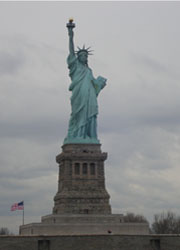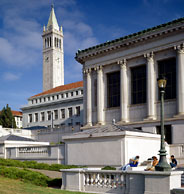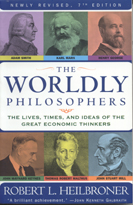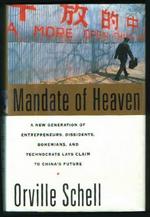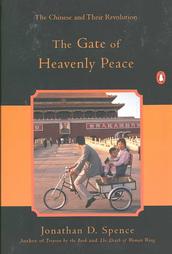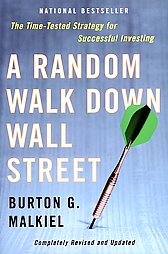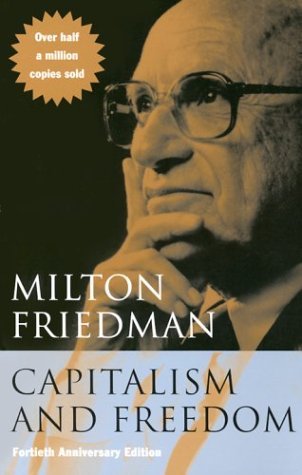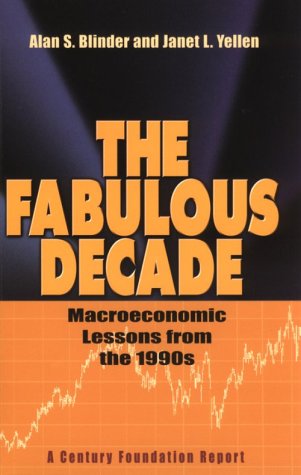New Design and Ad Rate Set for Time Magazine
For years Time magazine had a seemingly insurmountable lead in circulation over other weekly news magazines, but now that lead is narrowing.
Time said yesterday that starting in January it would cut its rate base — the number of readers it guarantees to advertisers — by 18.8 percent, to 3.25 million, from 4 million. The advertising rates charged by a magazine generally rise and fall based on that number.
But Time also said it wanted to persuade advertisers to switch to a new way of paying for ads, based on the total number of magazine readers, including those who read someone else’s copy. On that basis, Time says it has 19.5 million readers.
Time also said yesterday that it would increase its newsstand price by $1, to $4.95, starting in January. About 116,000 copies of the magazine are sold on average at newsstands.
Editors at Time are working on a redesign to be introduced in January, along with a change in the day the magazine hits newsstands, to Friday from Monday. Also, 800,000 of what Time determines to be its wealthiest readers will receive added style, travel and leisure content once a month. Time will pitch that magazine version to high-end advertisers.
The magazine’s announcement comes after months of tumultuous changes at Time, part of the Time Inc. division of Time Warner. Time Inc. has reduced the staff at all of its publications by 550 in the last year.
This year Time hired a new managing editor, Richard Stengel, with a mission to reinvent the magazine. It also hired Josh Tyrangiel to revive its Web site. Time and other weekly magazines have struggled to stay relevant against the Internet, cable channels and daily news.
Time’s publisher, Edward R. McCarrick, said the changes represented a monumental shift in magazine accountability. Some in the media industry have said that ads should be sold based on estimates of the total number of people who read a magazine, a system that would be similar to TV ratings.
Currently, magazine ads are sold based on the number of people who subscribe or buy the magazine on the newsstand. Mr. McCarrick said if advertisers agreed to switch to the new system, Time advertisers would be able to purchase space in the magazine based on a guaranteed number of 19.5 million readers starting next year, and the way the rate would be calculated would give advertisers more for their money.
“I don’t think the number of readers has gone down. That’s a number we are comfortable guaranteeing,” he said. “We’re doing something really bold and direct, which is throwing down the gauntlet.”
Previously, Mr. McCarrick said, Time’s rate base counts included people who received magazines through a variety of channels that other publications still use, including magazines sponsored by advertisers and sent out unrequested.
Earlier this year, the Audit Bureau of Circulations, which reports magazine circulation, began requiring magazines to break out the number of magazines in their circulation that go to places like doctors’ offices. Time magazine’s figure for such magazines was 350,623 out of about 4.1 million magazines sold in the first half of this year.
Newsweek magazine, in contrast, did not have such copies to report. Richard M. Smith, editor in chief of Newsweek, which is owned by the Washington Post Company, said he knew that Time had been looking at its rate base numbers for a while, just as his own magazine had.
“We continue to look carefully at the rate base, and I think for everyone in the magazine business the postal rate increases have been dramatic over the last few years, and we’re facing another increase of 12 percent in 2007. So that forces you to look at the economics of your circulation,” he said. “The other thing is, for both Time and Newsweek, the Web has provided both a very large audience and substantial advertising revenues.”
Time’s total circulation was up about 1.2 percent in the first half of this year compared with 2005. In contrast, the circulation of Newsweek fell 1.8 percent in the first half of this year, to about 3.1 million.
Some in the industry said Time’s reduction in its estimated readership was not surprising. Other magazines, including Reader’s Digest and Playboy, have also cut their base rates as circulations declined.
“Magazines are evolving to a kick-back medium from a news medium,” said Joe Mandese, editor of MediaPost in New York, an online and print trade publication. “Time is saying with the change that it’s not a start-your-week publication, it’s a kick-back, over-the-weekend publication, and Time.com is for news.”
US Newspaper Circulations Slide More
Nearly every major U.S. newspaper suffered circulation declines in the past six months, according to the newspaper industry’s twice-yearly report from the Audit Bureau of Circulations, the latest confirmation of the difficulties facing the industry as readers flock to the Web and other outlets for news.
Average daily circulation of the 770 newspapers reporting results to the ABC dropped 2.8% on a year-to-year basis during the six months ended Sept. 30, according to an analysis from the Newspaper Association of America, an industry-trade group. The drop in circulation follows a decline of 2.5% during the reporting period ended March 31 of this year and a 2.6% decline in the year-earlier period. Average Sunday circulation at 619 of the country’s newspapers fell 3.4% in the most recent six months, according to the NAA. The circulation figures are preliminary and subject to audit by the ABC.
The circulation report, which comes on the heels of several major publishers reporting weaker ad revenue for the third quarter, is likely to reinforce concerns among investors about the industry’s prospects. Those concerns have prompted some investors to push companies such as Tribune Co. to restructure or put themselves on the market.
Top 20 US Newspaper by circulation:
Newspaper Circulation Change from Mar-Sept. 2006
1. USA Today 2,269,509 -1.30%
2. The Wall Street Journal 2,043,235 -1.90%
3. The New York Times 1,086,798 -3.50%
4. Los Angeles Times 775,766 -8%
5. New York Post 704,011 5.10%
6. New York Daily News 693,382 1%
7. The Washington Post 656,297 -3.30%
8. Chicago Tribune 576,132 -1.70%
9. Houston Chronicle 508,097 -3.70%
10. Newsday, Long Island 410,579 -5%
11. The Arizona Republic 397,294 -2.60%
12. The Boston Globe 386,415 -6.70%
13. The Star-Ledger of Newark, N.J., 378,100 -5.50%
14. San Francisco Chronicle 373,805 -5.40%
15. Star Tribune of Minneapolis-St. Paul 358,887 -4.20%
16. The Atlanta Journal-Constitution 350,157 -3.50%
17. The Plain Dealer, Cleveland 336,939 -0.60%
18. The Philadelphia Inquirer 330,622 -7.60%
19. Detroit Free Press 328,628 -3.60%
20. The Oregonian 310,803 -6.80%
U.C. Berkeley Journalism Dean Search
U.C. Berkeley Journalism Dean Search
DRAFT:
Dean: Graduate School of Journalism: University of California, Berkeley
The University of California, Berkeley, invites nominations and applications for the position of Dean of the Graduate School of Journalism. The appointment is effective July 1, 2007.
The School offers a master’s degree program that prepares students for the highest levels of journalism. The School’s purpose is to educate professionals to work in areas ranging from newspapers, magazines, and television to documentary film, radio, photography, and new media.
The dean provides academic, intellectual, professional, and executive leadership; maintains a collegial environment conducive to excellence in teaching, research and journalistic integrity; and takes a leadership role in raising funds and promoting relationships with alumni and the profession.
Applicants for this position should demonstrate an accomplished journalistic record consistent with a position in a news organization of recognized excellence. Top candidates will have a record of demonstrated leadership and administrative skills. Teaching experience is desirable but not required. The Dean may hold a professorship in the Graduate School of Journalism.
Nominations or applications will be given prompt consideration if received by December 31, 2006, but earlier submissions are strongly encouraged.
Applications should contain a letter of interest, detailed resume, and the names of at least three professional references. Nominations should include complete contact information, through either print or electronic means. Nominations or applications should be sent to:
Chair, Journalism Search Committee
University of California, Berkeley
109 California Hall
Berkeley, CA 94720-1500
Electronic submissions are encouraged and should be sent to: journalismdeansearch@berkeley.edu
This is a sensitive position and subject to a criminal background check.
As a member of this search committee, I find myself at sea. Here is one question, addressed to all journalists:
What skills would you think you needed to learn immediately if you were starting in journalism right now?
Here’s a second question, addressed to everybody:
What does a good Graduate School of Journalism look like early in the 21st century?
Here’s a third, Berkeley-specific question:
Berkeley has no fewer than four bureaucratic organizations that seem to be headed for the same place or at least overlapping places:
UC Berkeley School of Information.
UC Berkeley School of Journalism.
UC Berkeley Center for New Media.
UC Berkeley Mass Communications Major.
Should all four of these be merged? Should we search for a Journalism School dean who could–if things develop in such a way–be dean of such a merged enterprise?
Ex-Chief of G.E. May Want Newspaper
From The New York Times:
Ex-Chief of G.E. May Want Newspaper
By Andrew Ross Sorkin
Some retired executives take up golf or gardening. John F. Welch Jr., the former chief of General Electric, has been looking into what would be a far less relaxing pursuit: running a newspaper.
Mr. Welch and Jack Connors, the co-founder of the Boston advertising firm Hill Holliday, are exploring the possibility of making an offer to buy The Boston Globe from The New York Times Company, according to people briefed on the plan.
Mr. Welch is not the only multimillionaire thinking of becoming a newspaper baron. David L. Geffen, the music impresario and a co-founder of DreamWorks SKG, and Eli Broad, a real estate developer, have explored making bids for The Los Angeles Times. Robert C. Embry Jr., president of the Abell Foundation in Baltimore, has made repeated efforts to buy The Baltimore Sun. David Chase has expressed interest in The Hartford Courant. All three of those papers are owned by the Tribune Company.
But newspapers, perhaps the ultimate trophy asset even as the industry appears to be in a free fall, may be too much even for previously successful business executives.
What a Bleak Era
What a bleak era for printing media. After the publisher of the LA Times was sacked, three former Knight Ridder newspapers are planning layoffs.
Read the news story from The New York Times:
The new owners of three former Knight Ridder newspapers announced layoffs, expected layoffs and abrupt changes in management yesterday as they painted a bleak outlook for the newspaper industry.
The San Jose Mercury News said it planned to lay off 101 people from its work force of 1,260 employees. The cuts are to include 40 workers from the 280-member newsroom.
The new owner of The Philadelphia Inquirer and its sister paper, The Daily News, said in a memo to the staff that “some layoffs are unavoidable.” Both papers underwent significant cuts last year.
And at The Contra Costa Times, the editor was abruptly made “redundant” as the paper consolidated many of its functions under its new owner, according to a memorandum to the staff.
Owners of all the papers said that most newspapers across the country were facing the same situation, largely because of significant drops in advertising revenues.
Michael Bloomberg Not to Sell His Company
Michael Bloomberg, founder and the largest share holder of Bloomberg LP, denied that he is about to sell his company, which is estimated to be worth as much as $12 billion.
It was said that potential buyers include Blackstone Group, the manager of the largest buyout fund, and Kohlberg Kravis Roberts & Company. McGraw-Hill and Thomson were also said to be interested.
Forbes magazine estimated that Bloomberg had $4.1 billion in revenue last year. The company has about 9,000 workers world wide.
In the over $10-billion financial market, Bloomberg seizes about 31 percent share and its rival, Reuters, takes about 23 percent, estimated an editor of the trade publication Inside Market Data Reference.
Read the news story from NYT.
Chief of China Youth Daily Sacked
From my CDT Post
Li Erliang, Editor-in-Chief of China Youth Daily, a newspaper owned by China Youth League, was sacked, Hong Kong newspaper Wen Hui Po reported. Li was replaced by Chen Xiaochuan, editor of Freezing Point, a weekly additional edition of the newspaper.
Li’s removal wasn’t elaborated by China Youth Daily, and the reason behind this is also unknown.
Chen Xiaochuan was appointed as the editor of Freezing Point after its former editor Li Datong was fired. Li’s dismissal was widely publicized.
The newspaper’s Party chief, Wang Hongqiu, was also removed, Wen Hui Po said.
-Click HERE to read the report (Chinese)
-Click HERE to read the report from China Times. The Taiwan Newspaper indicated that Li’s removal is due to the Freezing Point event early this year.
–More from CDT on Freezing Point
The Editorial Makes Way for the Business
Finally, the day of sentence come. The publisher of the LA Times was fired because of his refusal of cutting jobs from the newspaper’s 940-member editorial staff.
Jeffrey M. Johnson, the publisher, went to Chicago three weeks ago to convince the Tribune Company of the necessity of keeping the current staff, by doing which he risked his job. For a while it seems he secured his position. But he didn’t. The Tribune Company showed their tough side by forcing out Johnson for his renegade.
It’s not the first time the editorial made way for the business. Newspapers are on an irreversible trajectory of losing profits and circulations to the new media. And as this trajectory goes on, more editorial jobs and principles will be sacrificed. The media is controlled by the Wall Street, not by the public.
Is Singapore Ruled by Law?
Singapore banned Far Eastern Economic Review today.
In August, FEER was sued by Singapore Prime Minister Lee Hsien Loong and his father Lee Kuan Yew for defamation, after the magazine published an interview of an opposition politician.
The ban, however, was not issued by the court, but by the government. And the reason was, quite “unreasonably”, that the magazine didn’t appoint a legal representative and pay a 200,000 Singapore dollar (US$126,000) bond, a new requirement imposed on foreign publications. The new rule was released by the authority in August, after FEER published its allegedly defamatory story. Click here to read story on the lawsuit from the International Herald Tribune.
From the Wall Street Journal:
Singapore Bans Business Publication
Singapore has banned the Far Eastern Economic Review, a magazine that published an article about an opposition politician in the city-state, after it didn’t comply with requirements that it appoint a legal representative and pay a 200,000 Singapore dollar (US$126,000) bond.
In August, Singapore imposed tighter restrictions on foreign publications, including FEER, Newsweek, Time, the Financial Times and the International Herald Tribune.
The ministry said FEER would be classified as an “offshore newspaper” and had to appoint a legal representative in Singapore and pay the bond by Sept. 11.
“It is a privilege and not a right for foreign newspapers to circulate in Singapore,” the Ministry of Information, Communications and the Arts said in a statement.
The ministry warned that it is now an offense to import the magazine or reproduce it for distribution (more).
What’s Wrong with China’s media
Here is a simple example of the difference between a Chinese newspaper and an American media outlet: China Business News published a story based on online chats; Bloomberg refuses to publish any stories with anonymous sources except if the editor-in-chief agrees.
In my personal, silly view, Chinese media only need to do a very simple thing to catch up with the US media, which they always admire and imitate. Just be SERIOUS. Be serious on sources, be serious on facts, be serious on writing, and be serious on journalism.
Journalism is not the only area falling short of sincerity. In fact, the whole country is in a lack of seriousness. Going to a store, you would be asked with a false price. Going to a hospital, you will be treated carelessly if you are lucky or deadly if you are not. Going to a school, you will be taught by teachers who care about their business much more than your education.
We waste tremendous money and time only to make sure that we get treated seriously and truthfully. This is a huge waste of the nation’s wealth.
Journalism is a sector that is super sensitive to seriousness. In fact, being a journalist itself is a commitment to truth and probity. Journalists in the US are not well paid as well, but they do far better jobs than Chinese reporters do.
We can’t blame an individual reporter. To build honest journalism, we have a whole lot more to do. To only point a few. First, keep a proper distance between the owner of a news outlet and the journalists. Read the news to see how the editor-in-chief of LA Times risked his career rebelling orders of more lay-offs from the Tribune Company. Second, employ journalists who are more professional and more committed and give them training. Third, establish rigorous ethic and moralities and make sure no one has exception to make a compromise. Fourth, give journalists more respect, monetarily and spiritually.
This argument is not economically possible, however. If you can make the same money from a journalistic job, which asks for relentless moralities, as from any other jobs, which barely have moral requirements, why will you choose to be a journalist? Besides, most reporters are paid awkwardly in China.
The whole journalistic industry is still in a nascent shape. Caijing Magazine is respectable. But what Caijing does is just what a healthy news outlet should do. When a market is full of inferior products, a normal product will be over bought.
